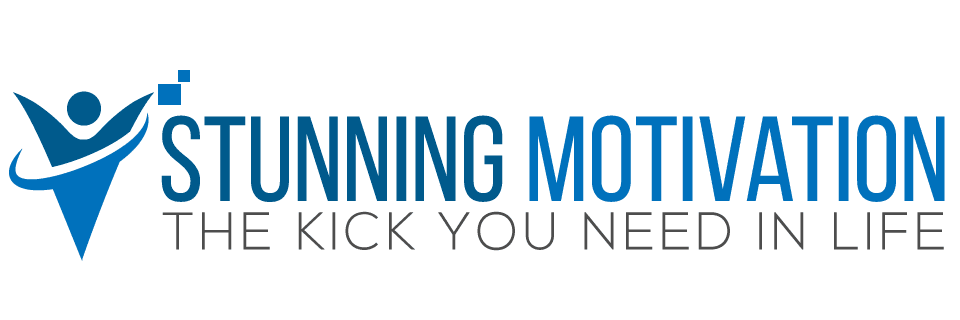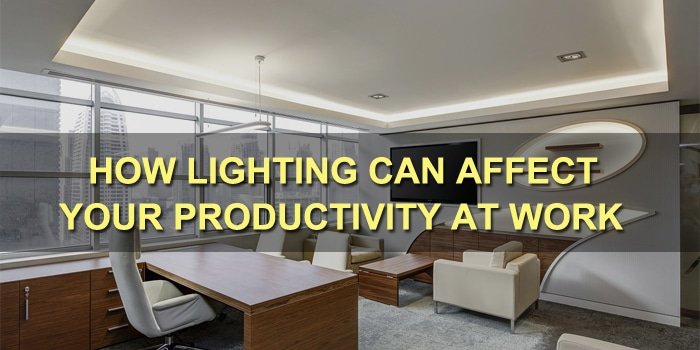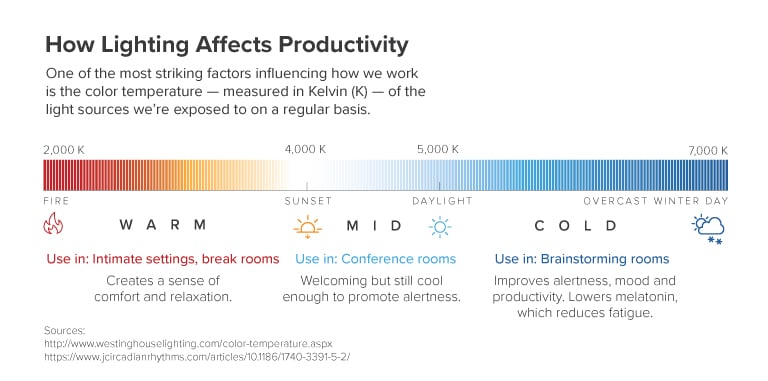This is a guest article contributed by Adam Robertson of Allard Office Furniture.
More often than not, an employer will regularly enquire about the factors which affect the productivity of their workers. While there are some obvious physical and environmental factors that affect just this, an employer often ignores or rather chooses to ignore, the so-called “ignorable factors” which we will further discuss.
Some of these ignorable factors, though, have a significant effect on the efficiency and general productivity of the workers, which in time could result in a whole range of consequences for a business.
These ignorable factors include having the proper office furniture, such as ergonomic chairs, which eliminate any distractions in the workplace such as pain in the back or neck, as well as factors such as ensuring that there is great workplace lighting for workers to properly work within.
Scientifically, it has been proven that the lighting in the workplace has a much significant effect on the worker’s efficiency and general work productivity, as well as any other considerable factors.
In fact, there has been various environmental research carried out to measure the effect of lighting in the workplace on a worker’s efficiency.
Lighting in the workplace has been discovered to have the ability to significantly alter the work rate and productivity of workers. Apart from its physical effect on workers, there are also psychological effects that can affect the productivity of a worker.
In this article, we will examine the possible effects of workplace lighting on workers and how it affects their efficiency and general work productivity.
The Effect Of Artificial Lighting On Work Productivity
As much as lighting is important in the workplace, it is always very essential to relate the kind of lighting to the kind of work which is being performed at the place of work.
For instance, in an office where a computer is used so often, it is essential to have a quality amount of light so as to relieve the effect of the brightness of the computer screen on the eyes of the workers.
Generally, there are two modes of artificial light. These include; the dim light and the high-intensity light.
According to research and environmental experts, dim lights have a tendency to cause unnecessary straining of the eyes which can lead to headaches and sometimes, eye issues.
The Use Of Dim Lighting In The Office
From the scenario given above, using a dim light in the workplace (office) can cause a lot of detrimental eye complications.
Inadequate dim lighting in the place of work can not only cause headaches and eyestrain but can also cause drowsiness and inner weakness, which in turn affects the efficiency of the workers and reduces their overall work productivity and work efforts because it makes them lose all sense of motivation.
The Use Of Artificial Lighting In The Workplace
The other kind of artificial lighting, which is the high-intensity lighting, also affects the productivity and effectiveness of workers in its own way. Because of the harshness of its intensity, the high-intensity lighting, like fluorescent and halogen lights, can also cause workers to get a headache.
These kinds of light can also be detrimental to the eye; especially if it were to switch on or switch off all of a sudden.
According to research, high-intensity artificial lights in the workplace have been identified as one of the major causes of migraine headaches among workers.
Natural Lighting And How To Reduce The Effect Of Artificial Lighting
The effect of artificial workplace lighting on work productivity can be quite enormous, and so the need of finding the perfect balance that fits the workplace is very important for the health of workers.
According to a study, conducted by the American Society Of Interior Design, 68 percent of workers or employees complain about the lighting in their office.
The fact that such a huge percentage of employees are worried about the lighting in their place of work to the point that they feel the need to complain about it suggests that having the right lighting is very important and is something that needs to be thought into my employers.
With that being said, generally, the best and most advisable type of lighting, depending on the kind of work, is the natural lighting.
During the day, setting the workplace in a way that the natural light is sufficient for the workplace is the easiest, safest and most advisable option.
Apart from the fact that natural lighting reduces the rate at which workers have headaches, reduces stress and drowsiness, a study from “The Responsible Workplace’ states that windows and any form of natural lighting were the number one determinant of the workers level of satisfaction and happiness in a building.
This is simply because of the ability of the lighting to affect the body in two different ways. This includes directly affecting how well a worker can see, and indirectly how well it affects mood and behavior.
Similarly, natural lighting helps to reduce levels of anxiety, as well as ensure that there are fewer illnesses or injuries involved such as eye strain or migraines.
The psychological effect natural lighting has on work productivity is positive and highly recommendable to everyone.
How The Positioning Of Office Furniture Helps With Lighting
To avoid the adverse effect of artificial lighting and to enjoy the positive effect of natural lighting, setting your office furniture in the right position amongst natural lighting is very essential.
Positioning all of the office furniture in a way as to enjoy and fully utilize natural light has a very positive effect on the overall work productivity.
The positioning of the office furniture to fit the perfect lighting for a job always reduces the adverse impact of lighting on work productivity, especially if it is artificial lighting.
It is always advisable to arrange the office furniture in a way that the workers face opposite the artificial lighting. This is because this reduces the rate at which workers will have direct contact with the lighting, which would otherwise cause workers to get eye strain and headaches.
This thereby ensures that workers maintain their work productivity, which over time helps the overall outcome of the company.
Whilst the positioning of office furniture is important, it is also essential to have the right office furniture. This includes having furniture such as ergonomic chairs or standing desks.
As well as having the right office lighting in the workplace, having the right office furniture is also important to reduce stress and up keep workers productivity levels.
Ergonomic chairs help to reduce stress, ensure and maintain the perfect seating posture, as well as relieve any nerves.
For increased work productivity, it is essential to keep workers comfortable and happy, one of the ways to do that is getting the right furniture for your workforce.
The choice of office furniture, the positioning of the office furniture and the type of lighting in the workplace, are all major factors, which together, work to help affect the worker’s efficiency and general work productivity.
Ensuring the adequate balance of these factors can skyrocket work productivity as high as possible.
Proper Lightings Effect On Productivity
Countless companies across the globe have noted their level of productivity to increase as a result of business lighting renovations.
A late example of a company which found lighting renovations to be more worker friendly was the US post office in Reno, Nevada, in the late 1980’s.
Not only did the renovation result in an energy saving of $50,000 per year, but also made the employees productivity levels to increase, which resulted in a better outcome than the actual energy saving bills.
In fact, with the change in lighting, the productivity boost was expected to increase the company’s revenue by around $500,000 per year.
An article published by the University of North Carolina gives a good understanding of how lightings can affect our productivity. Take a look at this infographic below:
This is what the article says:
It turns out cooler light makes workers more productive. A number of studies have found sunlight can have a multitude of benefits on our health. Exposure to natural light is especially beneficial to workers cooped up in an office all day. Natural light from both the morning and evening has been found to decrease depression and improve mood, energy, alertness and productivity.
Therefore, design your workplace where you want to have the most productivity and peak performance with natural light. Use more glass so that light is able to travel and disperse throughout the office space and this way, you will have a better exposure of natural lighting.
Conclusion
Finally, with lighting being a major component of a worker’s vision, and with vision being highly responsible for 80 to 85 percent of our perception of what we see, it is not too hard to see why ignoring the proper lighting strategies in your place of work could have a significant impact on the levels of productivity.
Harsh lighting and dim lighting are equally detrimental to the productivity of your workers, and, by opting for natural lighting or other lighting systems instead that are known to be more effective, you can not only save energy bills but can also increase the productivity of your employees, and thereby improve the overall outcome of the business.
About The Author:
Adam Robertson is a professional in the office furnishings industry. He works for Allard Office Furniture, an office furniture company which has 18 years of shared experience in office desks, chairs, supplies and accessories.




[…] Lighting in the workplace has a significant effect on workers’ efficiency and productivity. […]
No wonder the lighting blog was very nice, but I missed the section regarding color temperatures. Would it be possible if you can update this article with that section?
[…] according to this resource, the low-lit environment can practically strain your eyes and head. Thus, causing headaches and […]